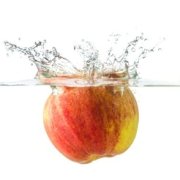Molybdenum (Mo)
Molybdenum is a trace element. An adult contains around 8-10 mg of molybdenum that is primarily found in the liver, kidneys, adrenal glands, spleen, bones, teeth, and skin. Molybdenum is incorporated in vitamin B12 and several enzymes that regulate the turnover of nutrients.
Functions and importance for
- Turnover of sulphurous amino acid
- Uric acid metabolism
- Vitamin B12
Deficiencies and poor utilisation may be caused by
- Refining and processing (of food)
- Large copper intake increases the excretion of molybdenum
Deficiency symptoms
Rarely seen as there is plenty of molybdenum in our diet. However, it may occur as a result of prolonged use of artificial nutrition.
- Rare metabolic disease with mental retardation. This is caused by molybdenum's failure to embed in the so-called metalloenzymes in the body
- Possibly a tendency towards gout
- Possibly disturbances of consciousness
- Possibly disturbances of the body's vitamin B12 production
- Sources
Mainly yellow peas, garlic, red bell pepper, lentils, grain products, nuts, eggs, and dairy products. Also, other vegetables and fruit.
Molybdenum content in micrograms per 100 grams
| Yellow peas and garlic | 70 |
| Dried lentils | 20 |
| Green beans | 20 |
| Oats | 10 |
| Milk, chicken | 5 |
Recommended daily allowance (RDA)
The daily requirement has not been established. Because of the uncertainty, the RDA level is quite similar to the amount of molybdenum that is found in an average diet.
Adults: 11 years of age and older: 50 micrograms
Children: 1-10 years of age: 17 micrograms
Increased need
Not known
Overdosing - side effects
Normally not seen with dietary intake. However, ingested at daily levels in excess of 500-600 micrograms or more, molybdenum may cause symptoms of poisoning.
- Copper deficiency that is the cause of the majority of symptoms
- Pigment disorders
- Anemia
- Inflammation of the joints
Important information
Molybdenum and copper are antagonists. Molybdenum is a heavy metal that is also used for industrial purposes, yet it appears to be comparatively non-toxic in connection with dietary intake.
- Created on .












 "After about one week of taking the Q10 supplement I could feel a huge difference," says 23-year old Alan Piccini, who has been suffering from extreme fatigue and muscle aches ever since he was a child.
"After about one week of taking the Q10 supplement I could feel a huge difference," says 23-year old Alan Piccini, who has been suffering from extreme fatigue and muscle aches ever since he was a child. “Taking capsules with co-enzyme Q10 has freed me of the severe side effects of my cholesterol lowering medicine,” Mrs Franken explains.
“Taking capsules with co-enzyme Q10 has freed me of the severe side effects of my cholesterol lowering medicine,” Mrs Franken explains.